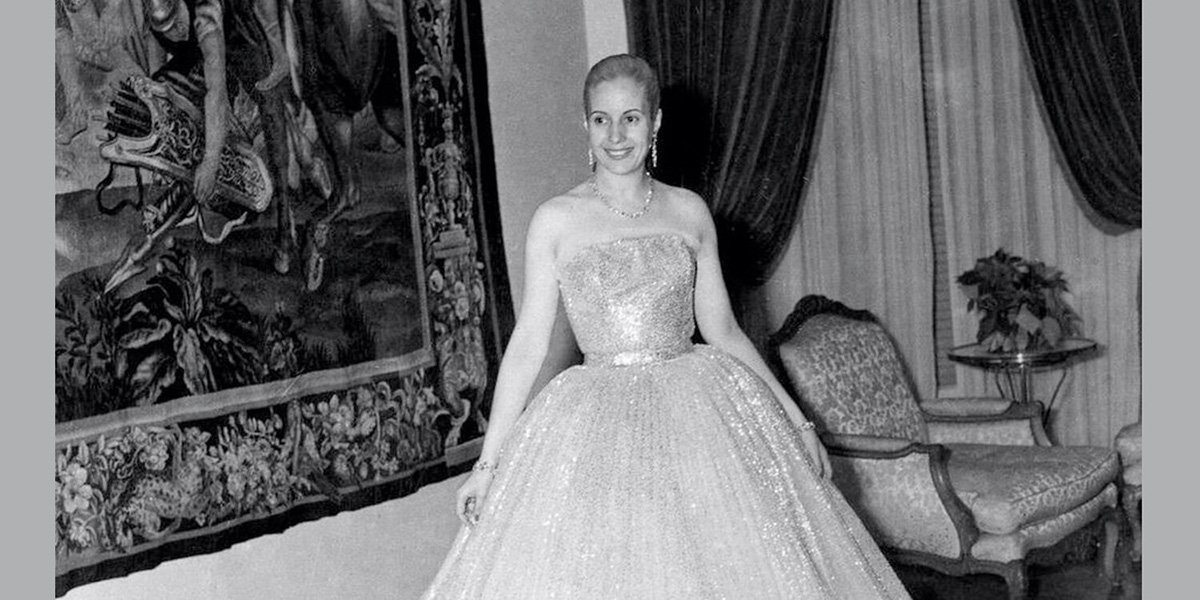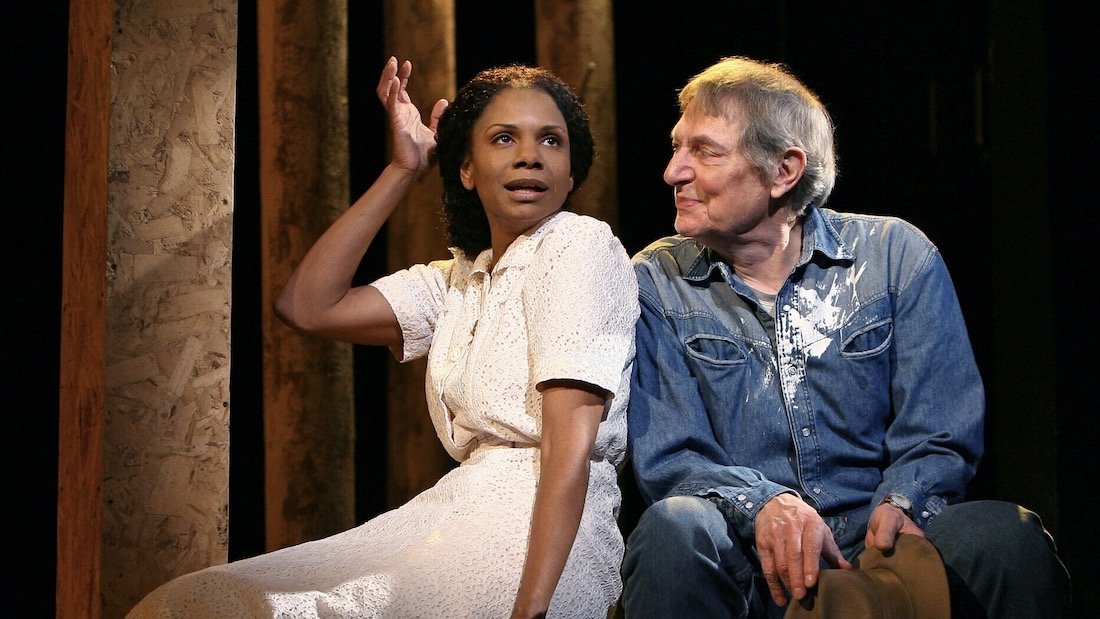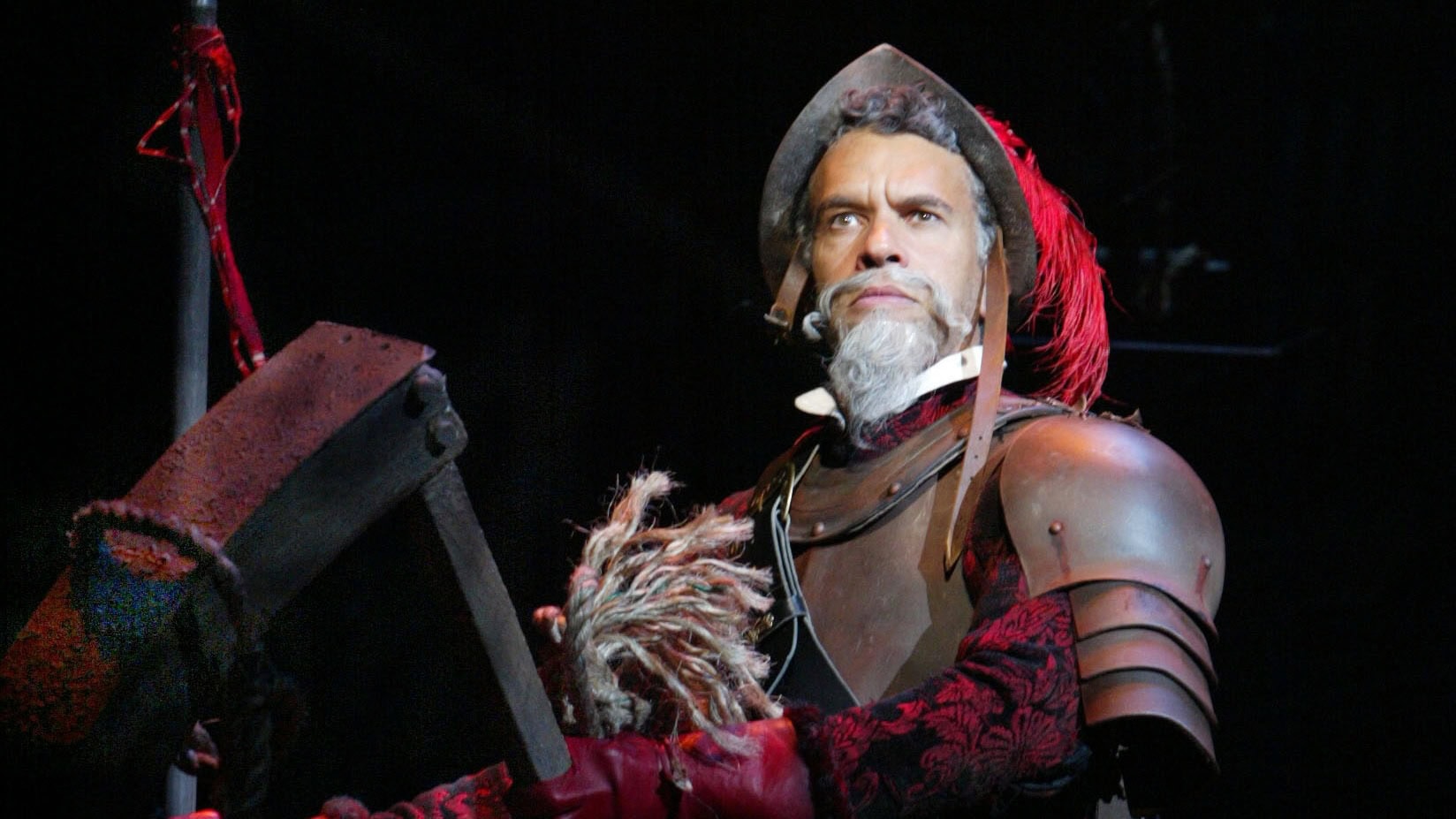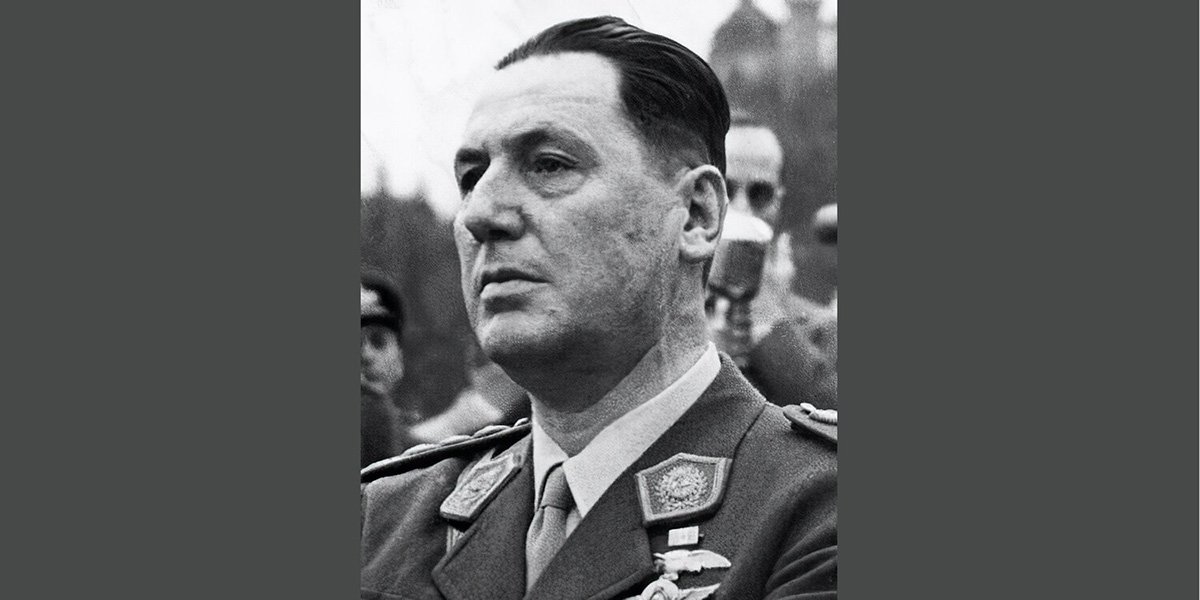
Eva Perón
In the show:
Fiery, stubborn and fearlessly ambitious, Eva rises from impoverished beginnings to become a beloved but contentious national figure. As the wife of Argentinian President Juan Perón, she gains global attention as the nation’s outspoken First Lady. Commanding the stage in every scene, Eva belts to the stratosphere as she ascends from small-town girl to actress to politician. When she dies at age 33, hordes of Argentinians mourn her with an almost pious devotion.
Che, the musical’s narrator and host, calls Eva “a cross between a fantasy of the bedroom and a saint.” Television ads for the original Broadway production proclaimed, “She simply seduced a nation.”
In real life:
María Eva Duarte de Perón (May 7, 1919 –July 26, 1952) was First Lady of Argentina from June 4, 1946 until her death in 1952. Born into poverty in the town of Los Toldos and raised in Junín, Eva moved to Buenos Aires at age 15 to pursue an acting career. She found some work as a model and B-movie actress before finding greater success acting on the radio.
In 1944, at age 24, she met the 48-year-old Juan Perón at a charity concert; they were married a year later. When Perón was elected President in 1946, Eva gained power and popular acclaim by speaking out for labor rights, running a charitable foundation, advocating for women’s suffrage, and forming the Women’s Peronist Party. Though critics denounced her for what they considered a hypocritically lavish lifestyle and unjust silencing of opposition, Eva maintained immense popularity among Argentine’s working poor. She planned to run for vice president, but her campaign was cut short by declining health. She died of cervical cancer at the age of 33. Named the “Spiritual Leader of the Nation” by the Argentine congress, she was buried in a state funeral attended by over 3 million people. Beloved by some and derided by others, she remains a controversial figure seven decades after her death.
Juan Perón
In the show:
Perón, like Eva, is politically ambitious, but he lacks Evita’s media savvy when it comes to the desires of the people. He loves his wife dearly, and more than once he follows her advice to fight hard despite his inclination to sit back and relax. Though the musical does not directly show Perón committing any wrongdoing, it emphatically suggests that he strong-armed his way to the top and viciously silenced his opposition.
In real life:
Juan Perón (October 8, 1895 – July 1, 1974) was elected President of Argentina three times. The son of a rancher, he was educated at Catholic boarding school and the National Military College. Rising quickly through the ranks of the Argentine military, he married his first wife, Aurelia Tizón, in 1929. She died nine years later of uterine cancer. In 1943, Colonel Perón participated in a successful military coup, unseating President Ramón Castillo. Aligning with workers’ unions, and running on a platform of social justice and economic independence, he was elected president in 1946.
In their book Evita: The Real Life of Eva Perón, authors Nicholas Fraser and Marysa Navarro describe Juan Perón as “a complicated man who over the years stood for many different, often contradictory, things.” While he supported workers and initiated social programs, he was also vicious in his silencing of any opposition. He oversaw a strengthening of the Argentine economy and a period of rapidly rising inflation. With support of labor, he was reelected in 1953, but was later excommunicated from the Catholic church for his alleged relationship with a minor. In 1955, he fled Argentina after an attempted military coup. Exiled for nearly twenty years in Spain (where he did actually meet with Che Guevara, twice) Perón returned to Argentina in 1973 after winning reelection through a surrogate candidate. His third term was marred by violent warring between right-wing and left-wing arms of the Peronist movement. Juan Perón died of a heart attack in 1974, at age 78.
Che
In the show:
Acting as an omniscient narrator and outspoken critic of Eva, Che (identified by first name only) guides the audience through Eva’s life story with a passionate and sardonic cynicism. He describes himself as “a man who grew and saw / from seventeen to twenty-four / his country bled, crucified.” Dressed in army fatigues, he aligns with the workers as he accuses Eva of selfishness and hypocrisy. In “Waltz for Eva & Che,” he finally confronts his subject face to face, asking, “How can you claim you’re our savior when those who oppose you are stepped on or cut up, or simply disappear?”
Though the original Broadway and West End productions of Evita overtly portrayed this narrator as the revolutionary Che Guevara, some subsequent productions, and the 1996 film adaptation, have presented him as an anonymous working-class Argentinian.
In real life:
Che Guevara (June 14, 1928 – October 9, 1967) was an Argentine Marxist revolutionary, physician, author, guerrilla leader, diplomat and military theorist. There is no evidence that he ever met or spoke with Eva Perón. Born Ernesto Guevara in Rosario, Argentina, he was raised in a leftist household and studied medicine at the University of Buenos Aires. In 1950 and ‘51, he explored South America on a motorcycle, inspiring him to leave medicine and instead demand social revolution.
Guevara became a major figure of the Cuban Revolution, leading a guerrilla army and ultimately becoming a Cuban citizen and one of Castro’s most trusted aides. He fought and supported revolutions worldwide, supporting Marxists in Vietnam, the Congo and Bolivia. In 1967, he was executed by Bolivian forces. After his death, Guevara’s image became a ubiquitous symbol of rebellion and counterculture.
Agustín Magaldi
In the show:
Cheesy and somewhat clueless, Magaldi is the first of many men to fall for – and be used by – Eva Duarte. The moderately successful tango singer, who thinks he’s found a harmless small-town peasant girl for a fling, gets railroaded by Eva and her family, who force him to bring the teenage girl from Junín to Buenos Aires.
In real life:
Nicknamed “The Sentimental Voice of Buenos Aires,” Agustín Magaldi (December 1, 1898 – September 8, 1938) was a tango and milonga singer. There is no evidence that Magaldi actually transported Eva Duarte from Junín to Bueno Aires in 1934. In fact, he may never have even met her. And, though the musical presents Magaldi and Eva crossing paths again at the 1944 charity concert where she meets Juan Perón, Magaldi could not possibly have been there; he died of liver cancer more than five years earlier, in 1938.
For more information about Evita, visit ConcordTheatricals.com.

Plays that Inspired Musicals

QUIZ: Which Character from The Lightning Thief Are You?





